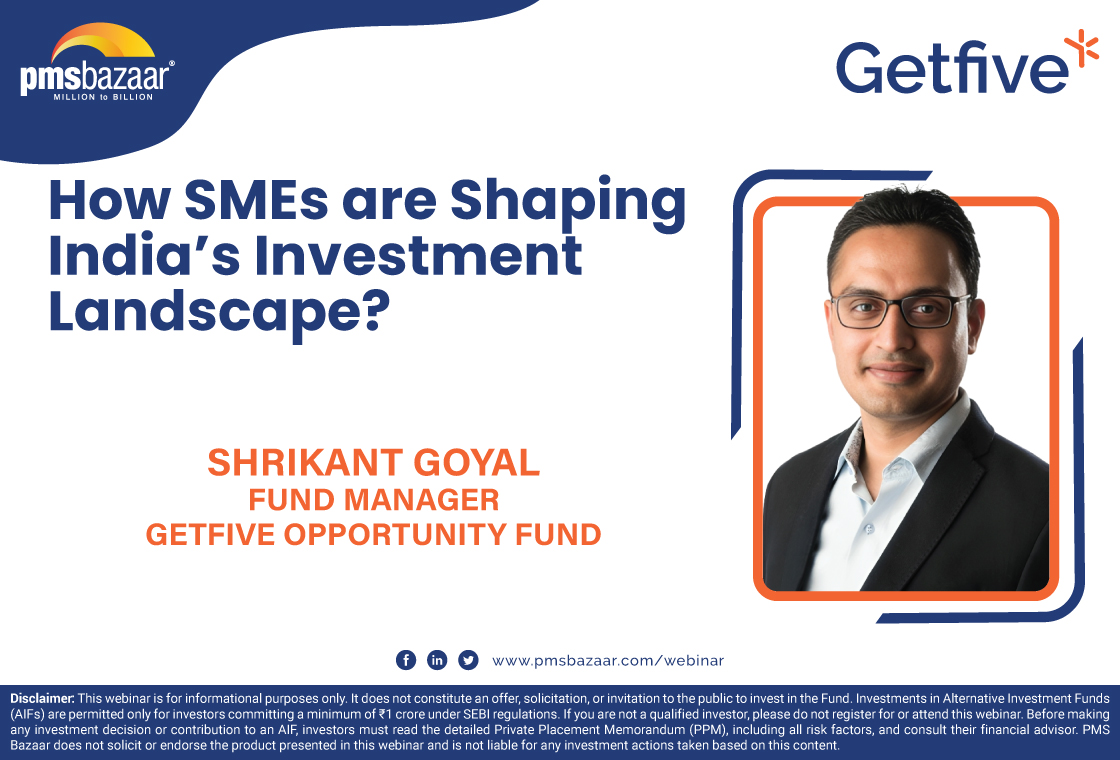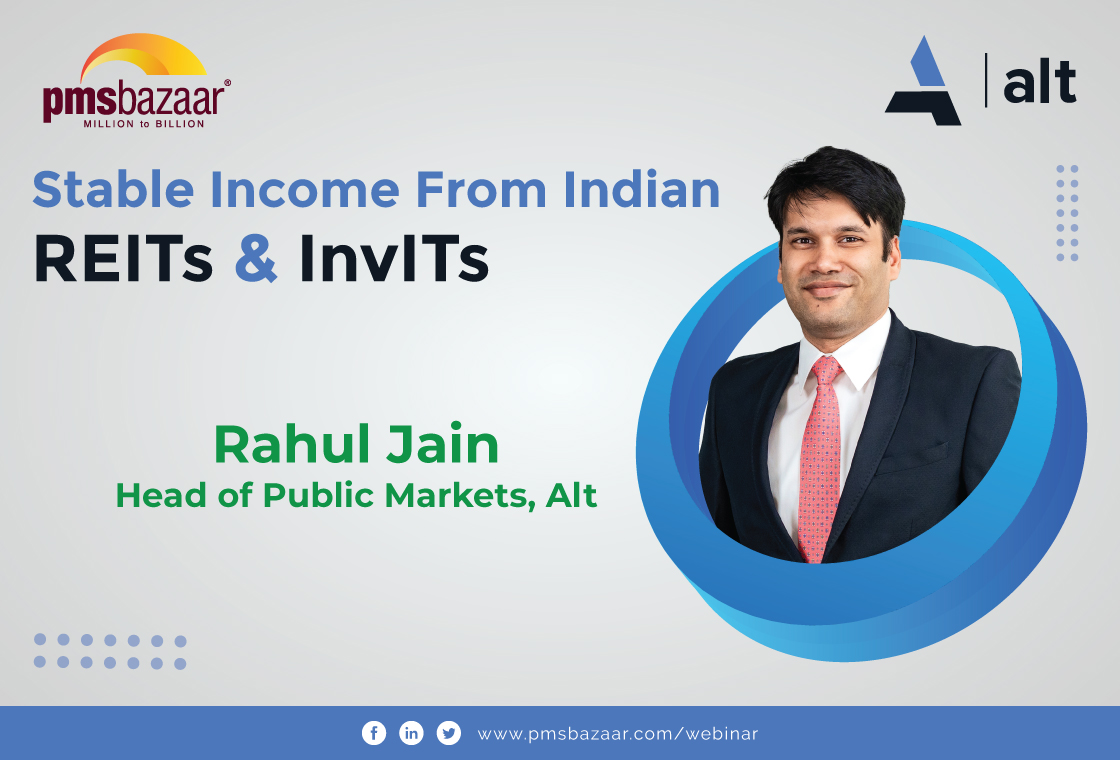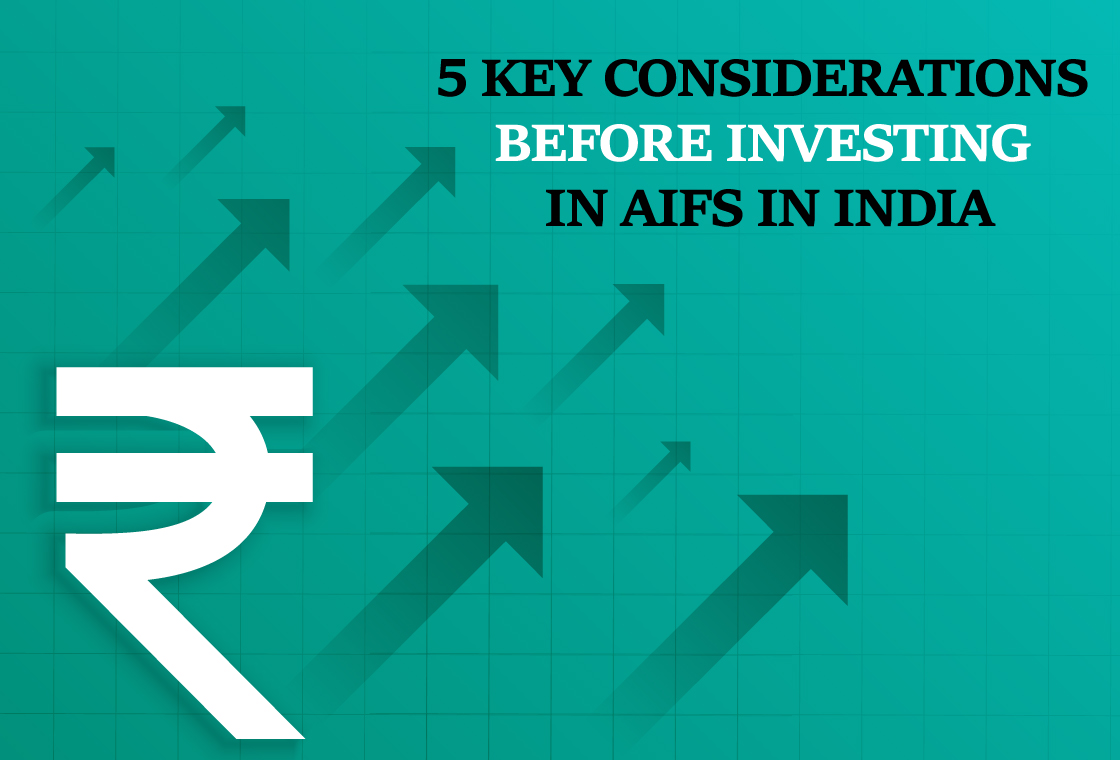In an environment where technology is disrupting a whole host of financial services, can its impact on wealth management be far behind? Three seasoned professionals, Anand Dalmia, Co-founder of Fisdom; Vikas Sachdeva, Managing Director at Sundaram Alternates; and Karthik Athreya, Director & Head of Strategy for Alternate Credit at Sundaram Alternates discussed the impact fintech is having on a critical HNI investment space.

To deliver unique perspectives on the impact of fintech firms in wealth management firms, we recently conducted a webinar as a part of "The Alternates Universe" webinar series. This informative series, presented in collaboration with Sundaram Alternates, brings valuable insights from renowned industry experts. In this blog, we have covered the excerpt from the 3rd episode of the series with Mr. Anand Dalmia, Co-founder of Fisdom. This episode was moderated by Mr. Vikas Sachdeva, Managing Director, Sundaram Alternates, and Karthik Athreya, Director & Head of Strategy for Alternate Credit, Sundaram Alternates.
Differing from traditional firms
Mr. Sachdeva started off by asking about the gaps in traditional wealth management services that fintechs were trying to bridge.
Mr. Dalmia sought to first emphasize the point that the boundaries between fintech and traditional firms were getting blurred because digital is becoming important for everyone. In a lighter vein, he added that every financial services firm would eventually become a software services company in the long term. A fintech first starts with the thesis about what customer problem it is seeking to solve, in his opinion.
Therefore, customer-centricity was at the core of fintech operations, he said. Mr. Dalmia contrasted that with the style of many traditional wealth management firms, which were product-centric in their focus. These firms are keener to sell their products and are usually the manufacturers. This phenomenon makes them subject to conflict of interest in his opinion and so they may not be that customer-centric.
The other key differentiator for fintechs was their tech-first approach to problems. Finally, most fintechs do not start with the idea of just making money. They are more focused on solving customer problems and when they reach the right scale, would automatically make revenues, Mr. Dalmia opined.
He cited the example of traditional versus discount broking firms. Traditional broking firms charged high fees and customers often did not get to see all their trade information easily. With the advent of discount broking firms, costs have come down dramatically irrespective of volumes of trade, disclosures are transparent, and customers can view their holdings easily at any point in time. Mr. Dalmia added that now all traditional broking firms have embraced discount broking in some form or the other.
Understanding fintech customer profile
Given all the focus on customer centricity, Mr. Athreya sought to understand who the typical customer or investor of a fintech firm was and what was driving them to such innovative companies.
Mr. Dalmia sought to answer this query in a couple of parts. First, he said traditional wealth management firms only serviced a certain category of investors – HNIs, UHNIs, and so on. Also, they would mostly cater to urban investors in the metros and top cities.
He added that in terms of age profile, traditional wealth management firms tend to focus on older customers as they had a better chance of having more investible surplus – say, Rs 2-5 crore.
But as far as fintechs are concerned, the ticket size is very small and the customer is typically quite young, Mr. Dalmia observed. He added that many of the customers would also come from smaller tier-2 cities. Fintechs just need to provide services and with the cloud, it becomes easy to cater to a larger audience, he said. In his view, with technology usage, we have seen rapid growth in broking accounts, mutual fund folios, and so on in the last 3-5 years, better than what could be achieved in the last 25-30 years.
The three challenges of trust, awareness, and inertia have been addressed by fintechs for mass affluent and retail customers.
As far as HNIs are concerned, traditional wealth management firms have not been able to penetrate this segment in smaller towns and villages due to the high-cost structures involved as also the lack of cultural affinity to the customers, he observed.
In rural areas, wealthy customers like firms that speak to them in their language and connect with them culturally before cutting a cheque.
Creating accessibility to platforms
The discussion then veered towards how wealthy individuals can get easier access to fintech platforms and Mr. Athreya also sought to understand the challenges customers face while being onboarded.
Mr. Dalmia said one of the key challenges is that in the financial services space, all aspects are regulated and therefore there are tough know-your-customer (KYC) norms to be followed. Multiple KYCs for several products and services can be burdensome for customers. Digital KYC solves much of this problem, he observed. The other challenge in his opinion was that intermediaries in the past had sold too many unnecessary products aggressively to customers. He cited the example of insurance products being pushed beyond customer requirements. As a result, some amount of HNI trust had been broken by intermediaries, he opined.
Also, there is a certain degree of personalization is needed in tailoring financial products for HNIs and they cannot be offered plain vanilla products all the time. He cited the example of a customer in the Northeast who had a Rs 100 crore portfolio and had never been told about PMS or AIF investments!
Tying up with banks can be of great help for fintechs, which can give greater accessibility to customers, especially in smaller cities.
How they stack up against global counterparts
At this point, Mr. Sachdeva observed that fintechs are making lots of inroads in the wealth management space, but sought to know how they compare with global fintechs.
Mr. Dalmia observed that before understanding the difference between global and Indian fintechs, it was important to know how the customers were different in these cases. In the US, for example, most products have an AUM to GDP ratio of 100%. So, the customer was very different there, he said, as they were aware, digitally savvy, and knew what was to be done for their portfolios. The second factor was that in the US, customers were willing to pay for financial advice, unlike here, he noted. The third key factor that he referred to was the regulatory environment in the US. Mr. Dalmia said in the US even fractional shares could be bought and sold.
He opined that given the economic and cultural setting in India, fintechs have a much larger role to play. SEBI’s regulations are making things more secure and people are becoming more comfortable, he said. Another key factor that is advantageous for fintechs in India is that the ticket size can be very small for investors, allowing many to participate, unlike in the US. Risk appetite is also increasing here. But access to products is still a challenge here, he noted.
Changing HNI and wealth management landscape
Mr. Sachdeva then sought to understand the changing preferences of HNIs in the present times of rapidly changing financial landscapes. To this, Mr. Dalmia sought to picture any customer including an HNI as an ‘Amazon’ customer who seeks low cost, large variety, scale, and the fastest time for delivery. And such things require the experience of an Amazon. The HNI of today, online or offline, is tracking his or her investments closely and keenly observes the value add that an advisor or intermediary is doing to the portfolio. In short, the HNI of today is much more aware, and seeks value for his or her money, he asserted. Therefore, wealth management firms are investing heavily in digital infrastructure to ensure that the customer has access to all information easily. HNIs today also seek a certain degree of personalization in products recommended to them. Finally, they also look for those providing them alpha, he observed.
Mr. Athreya then wanted to understand how wealth management firms could position products to investors by making them understand risk-reward aspects rather than being obsessed with returns alone. He also sought to know how product mis-selling could be reduced.
Mr. Dalmia said the problem is not very easy to address, but that technology could still solve a few problems in that respect.
The old problem of relationship managers selling unsuitable products could to some extent be addressed when customers are onboarded digitally to a platform. He said platforms can ask very involved questions to assess the risk profile of customers before suggesting products. Risk is also mapped by taking into account the activities an HNI does in the platform to understand his preferences and appetite.
Dashboards must be comprehensive and transparent with all analytical data so that the customer can take decisions smartly.
Mr. Dalmia then answered a few questions from the participants of the webinar.
Replying to a query on the top trends in the wealth tech space, he said giving an integrated experience to customers or investors across products was one of the top trends. More sachet and immersive product offerings are the other key aspects, he said.
Answering another question on how PSU banks are looking at the wealth management space, Mr. Dalmia said SBI’s success has pushed every other PSU bank to look at the segment more closely. Digital is at the center of what they are trying to do to catch up.
The Webinar Panel discussed all the above mentioned points and more. Watch the entire session with the appended link below -
Get access to rich data and analytics of PMS & AIF by subscribing to us. Join the 48000+ investors & experts now: Subscribe NOW
Recent Blogs

Long-Only AIFs Rebound Sharply in October; Long-Short Strategies Lag Despite Lower Volatility
106 long-only AIFs averaged 3.68% vs 32 long-short AIFs at 2.7%; only 24–31% of funds beat key indices

Markets log strongest monthly gains in 7 months; PMS performance turns near-uniform in October
Nifty 50 TRI gained 4.62%, BSE 500 TRI rose 4.27%; 415 of 427 equity PMSes ended positive

How SMEs are Shaping India’s Investment Landscape?
PMS Bazaar recently organized a webinar titled “How SMEs are Shaping India’s Investment Landscape?” which featured Mr. Shrikant Goyal, Fund Manager, GetFive Opportunity Fund.

Stable Income from Indian REITs and InvITs
PMS Bazaar recently organized a webinar titled “Stable Income from Indian REITs and InvITs,” which featured Mr. Rahul Jain, Head of Public Markets, Alt.

5 Key Considerations Before Investing in AIFs in India
Alternative Investment Funds (AIFs) have emerged as a compelling option for sophisticated investors seeking diversification and potentially superior returns. But venturing into AIFs requires a clear understanding of their unique characteristics that go beyond simply knowing what they are and their categories.

How AIF can help in diversification?
Traditionally, Indian investors have relied on a mix of stocks and bonds to build their wealth. While this approach offers diversification, it can still leave your portfolio vulnerable to market fluctuations. Enter Alternative Investment Funds (AIFs), a dynamic asset class gaining traction for its ability to unlock diversification beyond the realm of conventional options.

Long-Short AIFs Outperform Again Even as Markets Rebound in September
104 long-only funds shows an average monthly gain of just 0.37 per cent, while long-short AIF category averaged 0.94 per cent

Resilience returns as markets rebound in September; Multi-asset PMSes lead pack
Over 63% of equity PMSes ended September in green; nearly two-thirds outperformed key benchmarks.

